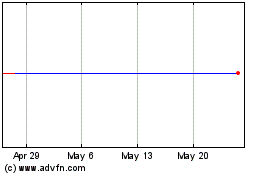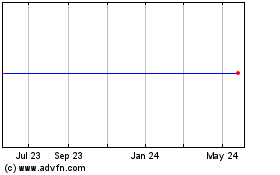McAfee Labs: It’s Time to Be Proactive on Cybersecurity
August 10 2010 - 3:01AM
Business Wire
A new report published by McAfee, Inc. (NYSE:MFE) stresses the
need for the security industry to take a more proactive position
against cybercriminals. In light of recent cyberespionage, the
breakup of cybercrime rings, and the threats that sophisticated
malware such as Stuxnet present to critical infrastructures, McAfee
Labs™ researchers and industry experts call for a more proactive
strategy for fighting cybercrime.
“Cybercriminals prosper because they have very little reason to
fear the consequences,” said Jeff Green, senior vice president of
McAfee Labs. “As security experts, it’s time to take a hard look at
what we do, how we do it, and what our ultimate goals are. The
tools and techniques of cybercrime continue to grow in number and
sophistication at alarming rates. Every time we release a new
statistic about the rise in malware it points to our failure as an
industry.”
The report, titled “Security Takes the Offensive,” is based on
strategies compiled by international experts and issues a “call to
arms” to the security industry. Traditionally, security technology
companies and computer users have taken a defensive posture,
putting the cyber equivalent of body armor on computers, networks
and in the cloud. The report’s authors say it is now time to avoid
enemy strikes altogether by taking a more aggressive stance,
aligning forces and involving law enforcement.
“As we look at the evolution of risky domains and websites over
multiple years, we can’t avoid the conclusion that the risk keeps
increasing in both volume and sophistication,” said David Marcus,
director of security research and communications for McAfee Labs.
“If we want to stop being victims, then the good guys need to
advance security efforts as threats evolve.”
- The report details the following
methods for building a more offensive security strategy: Use
hacker techniques: Data loss is accelerating at an alarming
rate, as there were 222 million records lost in 2009 in the United
States alone. Organizations should use hacker techniques, such as
fuzzing and penetration testing, to find bugs within their own
products and address the issues, shutting the door on the bad
guys.
- Provide data to help
prosecute cybercriminals: A major component for combating spam
lies in the hands of ICANN (the Internet Corporation for Assigned
Names and Numbers), as it accredits the registrants that sell the
domains which cybercriminals use to host malicious sites. Working
with the security industry, ICANN should take a stronger stance
against cybercrime.
- Share information:
Computer users, security professionals and administrators should
share intelligence information with their trusted security vendor,
and in turn security vendors should cooperate in live metadata
sharing. Legislators should take these issues into account when
drafting laws within their respective countries.
- Implement “shuns” and
“stuns”: Three successful “tried and true” takedowns to
date—MoColo, Atrivo and Mega-D—fall into one of two
categories: “shuns,” in which the Internet community ostracized the
network, and “stuns,” which focused on incapacitating botnets. An
offensive security practice should involve the entire security
industry while incorporating methods that have proven successful.
Shuns and stuns have beaten the odds in the past and industry
experts as well as law enforcement should embrace these methods as
a common security practice.
- Use tactics that increase
risk for cybercriminals: Cybercrime has become an increasingly
for-profit endeavor. Like any enterprise business model, the
psychology of organized cybercrime follows the three major factors:
risk, effort and reward. By using a number of potential tactics
affecting each of these factors, the ratio can flip, so that
cybercriminals faced actual risk for substantially reduced reward,
diminishing cybercrime overall. Some of those tactics include
publicly disclosing the names of cybercriminals, increasing the
fines against cybercriminals, increasing the shutdowns of affected
domains, more effective spam filtering, closing “dropped” email
accounts and freezing payment accounts that are suspected of
fraud.
- Educate: Security experts
should work with governments to provide models to tie together
cybercrime-reporting with cybereducation, so users can start to
link uninformed behavior to their risk of becoming victims. This
includes educating those fighting cybercrime “on the streets” to
have the latest in malware techniques, bringing tools to the mass
population to help identify risky behavior, pointing users to the
right contacts to report crimes, and helping to build education and
awareness at the kindergarten level through higher education.
The McAfee Security Journal outlines an offensive strategy that
involves a couple of key components: proactive law enforcement and
the security community banding together to help takedown the
offenders. McAfee® Global Threat Intelligence™ is a comprehensive
solution that scans the entire Internet and effectively uses
millions of sensors to gather real-time intelligence from host IP
addresses, Internet domains, specific URLs, files, images and
e-mail messages. Armed with this information, the team at McAfee
Labs works across governments and international law enforcement,
and has a ten-year history of building communities of trusted
information sharing to help catch criminals. This unified approach
turns a reactive security strategy into an offensive security
strategy, laying the groundwork for the type of interaction that
will help bring down major producers of malware, spam and
scareware.
“Creating a framework for these organizations to play a greater
role in reporting abuses and enforcing laws (along with a greatly
increased budget) is where lawmakers seeking to make an impact on
cybercrime should turn their attention,” said Joe Stewart, director
of malware research with the SecureWorks Counter Threat Unit, in
the report. “This is a long-term effort, and one that will require
great political bartering and global treaties before cybercrime
could be considered a risky endeavor by those who seek to abuse the
Internet for their personal gain.”
Experts in the report are McAfee Labs researchers, as well as
renowned security journalist Brian Krebs, Technical and Research
Lead for Recurity Labs Felix “FX” Lindner and Joe Stewart. All of
our experts agree that the recommendations laid out in the report
are preliminary, and this is just the first step that needs to be
taken industry-wide.
For a full copy of the McAfee Security Journal, please visit
http://www.mcafee.com/us/research/mcafee_security_journal/index.html.
About McAfee, Inc.
McAfee, Inc., headquartered in Santa Clara, California, is the
world's largest dedicated security technology company. McAfee
delivers proactive and proven solutions and services that help
secure systems, networks, and mobile devices around the world,
allowing users to safely connect to the Internet, browse and shop
the Web more securely. Backed by unrivaled Global Threat
Intelligence, McAfee creates innovative products that empower home
users, businesses, the public sector and service providers by
enabling them to prove compliance with regulations, protect data,
prevent disruptions, identify vulnerabilities, and continuously
monitor and improve their security. McAfee secures your digital
world. http://www.mcafee.com
NOTE: McAfee and Global Threat Intelligence are registered
trademarks or trademarks of McAfee, Inc. or its subsidiaries in the
United States and other countries. Other marks may be claimed as
the property of others. The product plans, specifications, and
descriptions herein are provided for information only and subject
to change without notice, and are offered without warranty of any
kind, expressed or implied.
Mcafee (NYSE:MFE)
Historical Stock Chart
From Jun 2024 to Jul 2024

Mcafee (NYSE:MFE)
Historical Stock Chart
From Jul 2023 to Jul 2024
